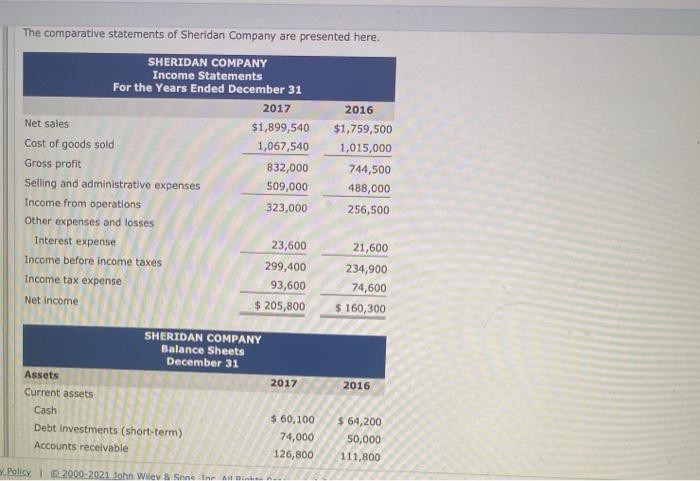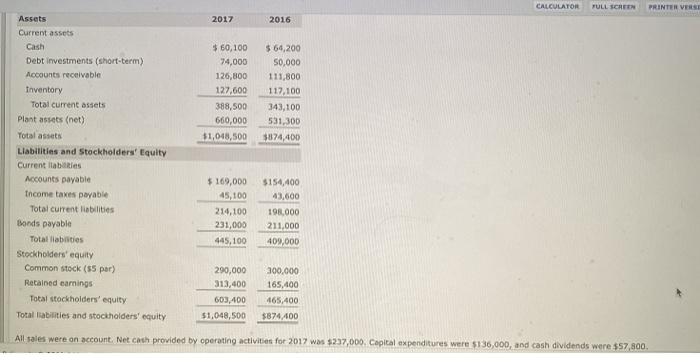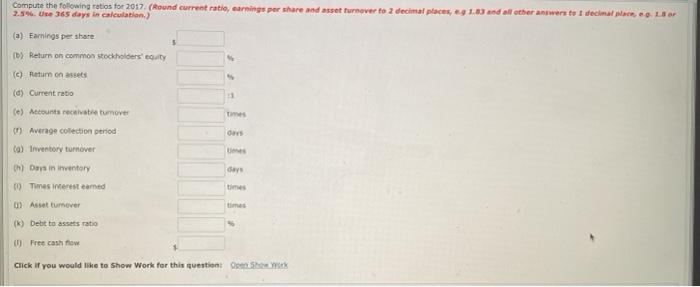The comparative statements of Sheridan Company are presented here. SHERIDAN COMPANY Income Statements For the Years Ended December 31 2017 Net sales $1,899,540 Cost of goods sold 1,067,540 Gross profit 832,000 Selling and administrative expenses 509,000 Income from operations 323,000 Other expenses and losses Interest expense 23,600 Income before income taxes 299,400 Income tax expense 93,600 Net income $ 205,800 2016 $1,759,500 1,015,000 744,500 488,000 256,500 21,600 234,900 74,600 $ 160,300 SHERIDAN COMPANY Balance Sheets December 31 Assets Current assets Cash Debt investments (short-term) Accounts receivable 2017 2016 $ 60,100 74,000 126,800 $ 64,200 50,000 111,800 y Policy. 1 2000-2021 John Wiley & Sonen in CALCULATOR FULL SCREEN PRINTER VERSI 2017 2016 $ 60,100 74,000 126,800 127,600 388,500 660,000 31,048,500 $ 64,200 50,000 111,800 117.100 343,100 531,300 $874,400 Assets Current assets Cash Debt investments (short-term) Accounts receivable Inventory Total current assets Plant assets (net) Total assets Liabilities and Stockholders' Equity Current abates Accounts payable Income taxes payable Total current liabilities Bonds payable Totallaties Stockholders' equity Common stock (55 par) Retained earnings Total stockholders' equity Total liabilities and stockholders' equity $ 169,000 45,100 214,100 231,000 445,100 $154,400 43.600 198,000 211,000 409,000 290,000 313,400 603,400 51,048,500 300.000 165,400 465,400 $874.400 All sales were on account. Net cash provided by operating activities for 2017 was $257,000. Capital expenditures were $136,000, and cash dividends were $57,800. Compute the following ratios for 2017. (Round current ratio, earnings per share and asset turnover to 2 decimal places, *.9 1.01 20d all other answers to I decimal place, o 18 or 365 days ) (a) Earnings per share $ b) Return on common stockholders' couty (c) Return on assets (d) Current ratio 1 Ce) Accounts receivablatumover times Average collection period (a) Inventory turnover h) Days in inventory 9 Times interest eamed times 01 Asset turnover times (k) Debt to assets ratio Free cash flow Click if you would like to Show Work for this question or









